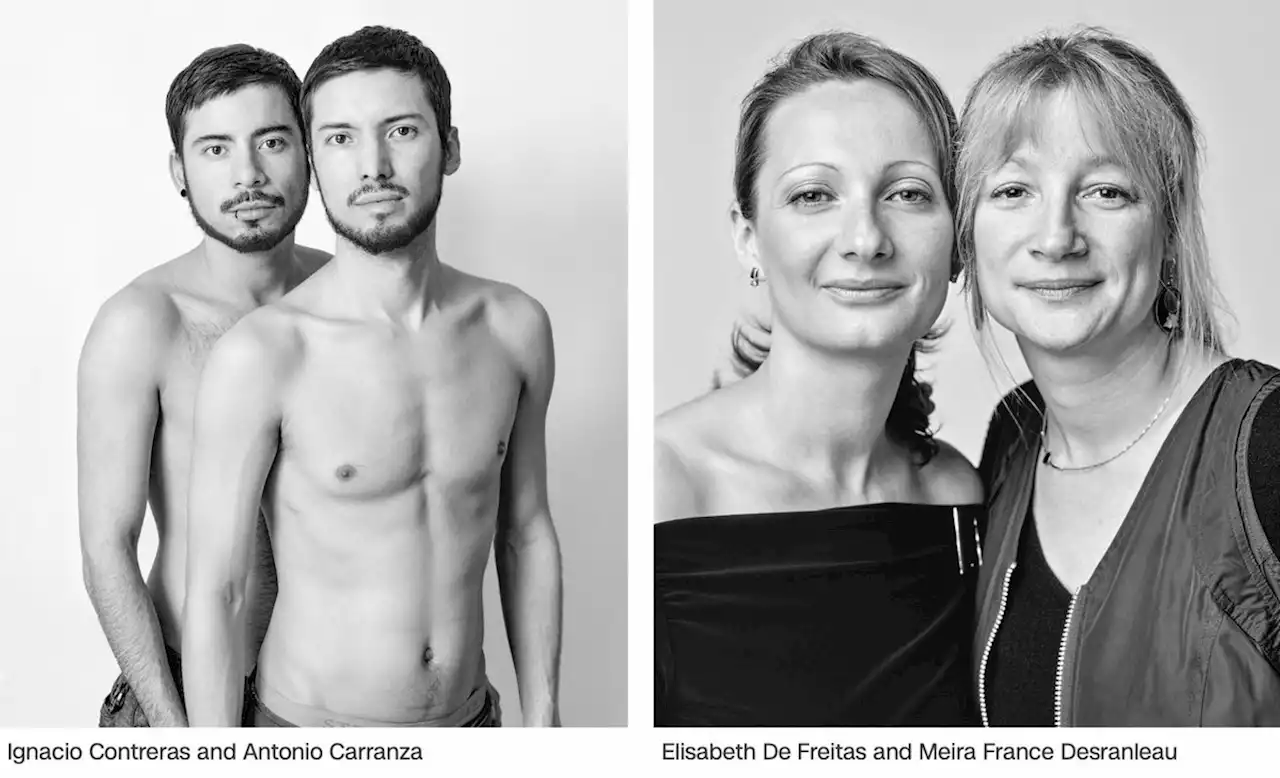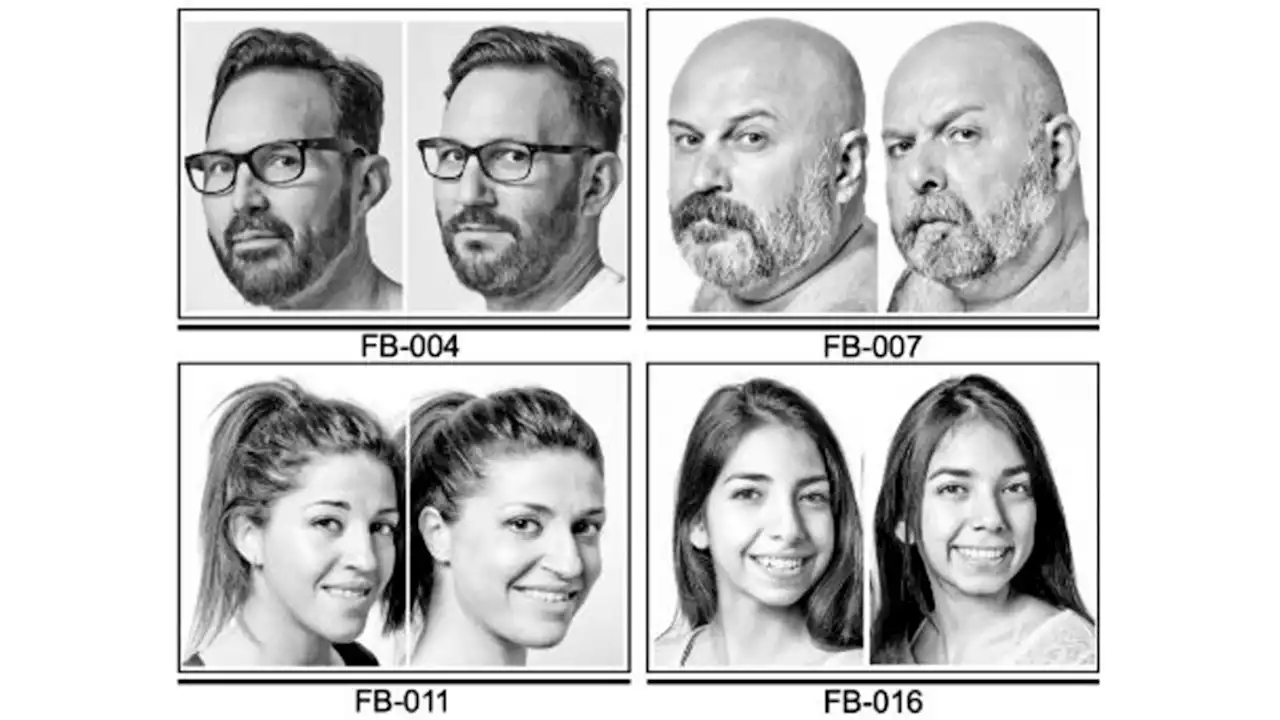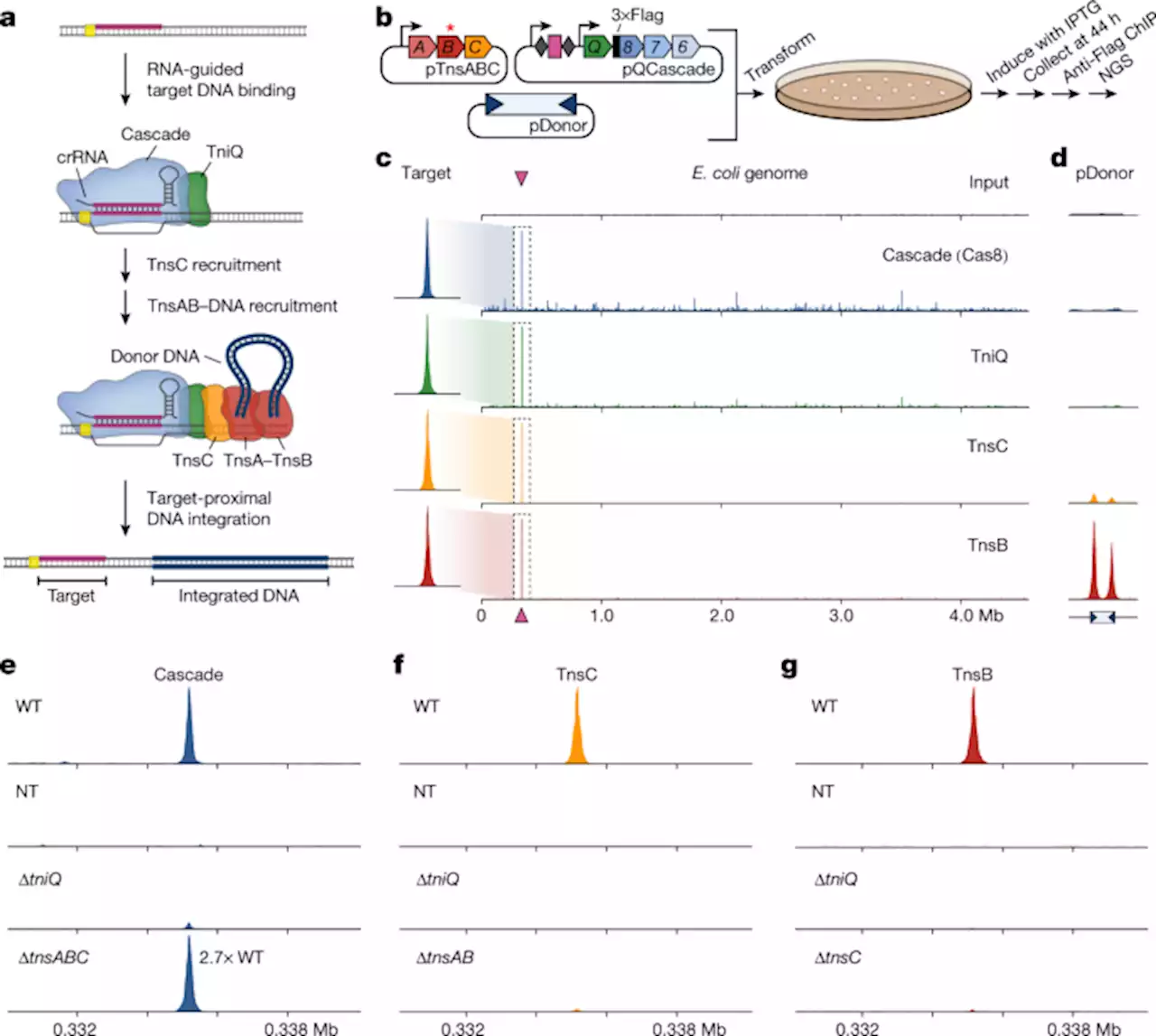Nature research paper: Selective TnsC recruitment enhances the fidelity of RNA-guided transposition
= 3 independent biological replicates. The absolute sample numbers shown in= 10, 20, 30, 40, 30, 20, and 10 for mismatch position 1, 2, 3, 4–29, 30, 31, and 32, respectively., Representative cryo-micrographs for the TnsC•ATP heptamer at various defoci; the corresponding CTF is shown ., Representative reference-free 2D class averages with four types of views identified: top and bottom views, a lateral side view and intermediate views.
Extended Data Fig. 6 Inter-monomer interactions, biochemical characterization, and TnsC heptamer formation., Purification and heptamer assembly experiments with ATPase mutants of TnsC. SDS–PAGE analysis and SEC chromatograms are shown for the indicated mutants, with TnsC monomer and heptamer peaks indicated. Mutations in the Walker A , Walker B , and arginine finger motifs prevent formation of stable heptamers.
United States Latest News, United States Headlines
Similar News:You can also read news stories similar to this one that we have collected from other news sources.
 You have a doppelganger and probably share DNA with them, new study suggestsCNN News, delivered. Select from our newsletters below and enter your email to subscribe.
You have a doppelganger and probably share DNA with them, new study suggestsCNN News, delivered. Select from our newsletters below and enter your email to subscribe.
Read more »
 Unrelated Folks Who Look Alike Share Similar DNA - MedicineNet Health NewsA person’s unrelated lookalike, commonly known as a doppelganger, may actually share genes that affect not only how they appear, but also their behavior.
Unrelated Folks Who Look Alike Share Similar DNA - MedicineNet Health NewsA person’s unrelated lookalike, commonly known as a doppelganger, may actually share genes that affect not only how they appear, but also their behavior.
Read more »
 Lookalikes share DNA and personality traits, says studyResearchers examined 32 lookalikes and proved that genetically unrelated people who look alike are likely to have similar DNA.
Lookalikes share DNA and personality traits, says studyResearchers examined 32 lookalikes and proved that genetically unrelated people who look alike are likely to have similar DNA.
Read more »
Those doppelgängers don’t just look like you—they may share your DNAA study of look-alikes—unrelated people with faces so similar they could pass for identical twins—has found that such pairs share genetic traits.
Read more »
‘Phenomenal’ ancient DNA data set provides clues to origin of farming and early languagesThree new studies present DNA from more than 700 individuals who lived and died in the Near East over more than 10,000 years—surveying the history of the region through a genetic lens.
Read more »
